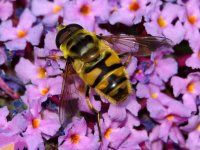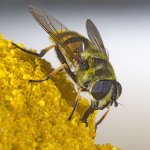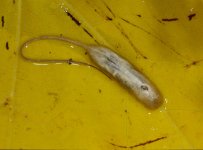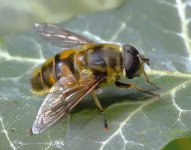Myathropa florea (Linnaeus, 1758)
Identification
Identification difficulty = 1. ![]()
![]() according to Ball & Morris, 20241
according to Ball & Morris, 20241
Synonymy
Myiatropa florea Linnaeus in Coe(1953)2. Known as the 'Batman fly' because the shape of the black marking on the rear half of the thorax resembles the Batman logo.
Biology
This is the most abundant and least choosy of the hoverflies associated with decaying wood. The larva, which is of the 'long-tailed', aquatic type, occurs in any situation with wet wood debris, typically, water-filled tree hollows containing decaying leaf and wood detritus, and decaying roots deep underground. They will develop in compost and cow-dung. They will readily use artificial breeding sites consisting of containers of water mixed with rotted sawdust or woodland litter. Adults disperse widely and visit a variety of flowers. Males hover in the canopy, making a loud high pitched buzz. They are often seen in gardens.
Flight period
The following plots show the number of unique records per week excluding those reported to be of immature stages.
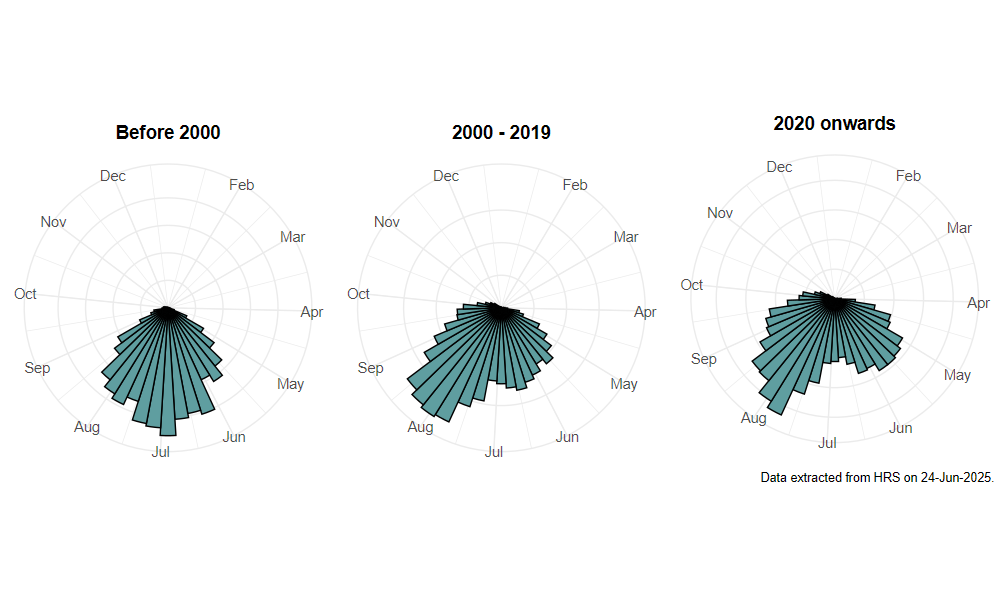
Distribution
Common and widely distributed across lowland Britain but markedly less common in upland areas.

Trends
The following plots show the Frescalo TFactor vs year and a map of the rescaled frequency (all records) for the species.
